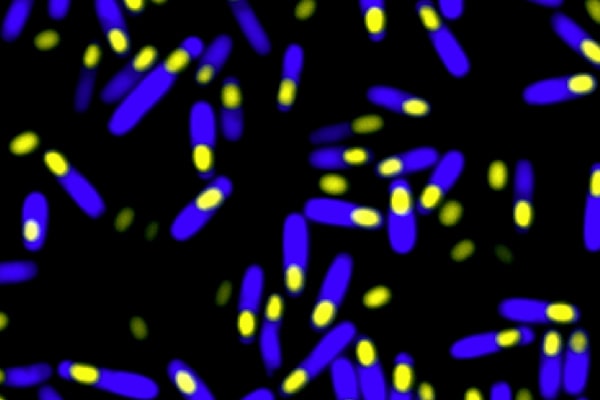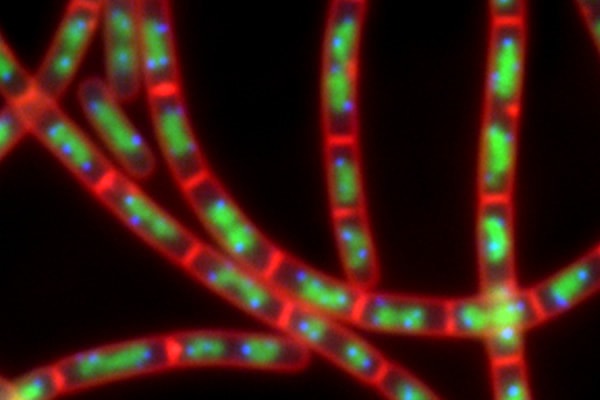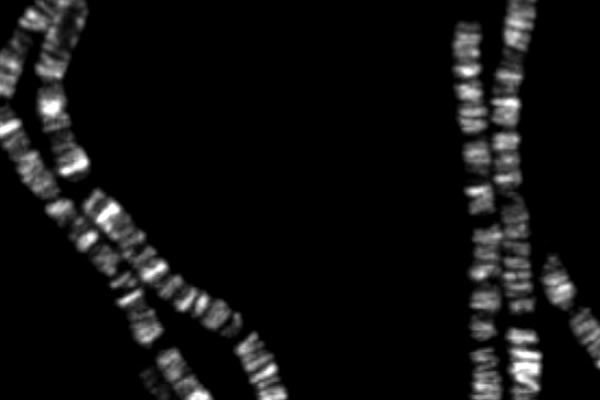Upon nutrient starvation, B. subtilis differentiates into a dormant cell type called a spore. The first landmark event in this process is an asymmetric division generating a large mother cell and smaller forespore (the prospective spore). Shortly after division the mother cell membrane migrate around the forespore in a phagocytic-like process called engulfment. At this stage the mother nurtures the developing spore while the spore prepares for dormancy. Once the spore is mature, the mother lyses releasing it into the environment. We study how the mother and forespore communicate with each other during this developmental process. We are also investigating the molecular mechanisms underlying the morphological process of engulfment and the organization and segregation of the chromosome during differentiation.
Research
-
Spore Formation in Bacillus subtilis

-
Chromosome Dynamics

How chromosomes are replicated, organized and segregated are outstanding questions in all organisms. We study these fundamental processes during growth and differentiation in B. subtilis. Our research has principally focused on three of the most highly conserved factors in chromosome organization and segregation: the parABS partitioning locus, the SMC condensin complex, and the SpoIIIE/FstK DNA translocase. We are also engaged in cytological and classical genetic screens to identify novel factors that influence the organization and segregation of the B. subtilis chromosome.
-
Cell Wall Biogenesis

Growth, division, and morphogenesis involve a highly choreographed interplay between synthesis and degradation of the cell wall or peptidoglycan layer. This macromolecule is composed of glycan strands crosslinked to one another by short peptides to form a three-dimensional meshwork that encapsulates the cytoplasmic membrane, provides cell shape, and protects the cell from osmotic lysis. We are characterizing the enzymatic complexes that synthesize the cell wall and those that remodel it in B. subtilis. In collaboration with Tom Bernhardt’s lab (our neighbor) we are also studying envelope biogenesis in two other Gram-positive bacteria: Staphylococcus aureus and Streptococcus pneumoniae. The comparitive analysis of a rod (B. subtilis), a sphere (S. aureus) and an American football (S. pneumo) will reveal similarities and differences in the assembly and remodeling of this fundamental and essential macromolecule.
